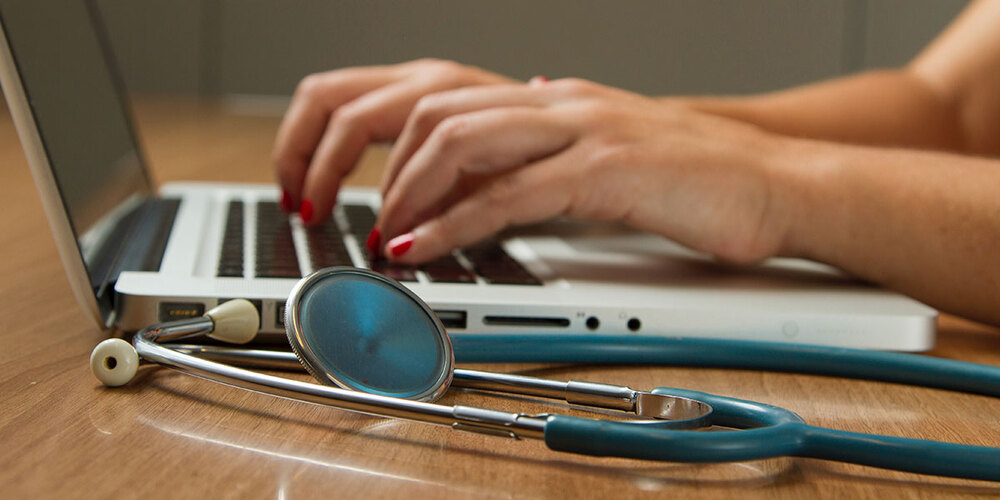Building a Logbook App for Electronic Health Records: A Guide to Medical App Development
Mobile App Development | 07-12-2021 | Sai Pendyala

Digitalization has had a massive impact on the healthcare industry. Modern technology has made patient-physician interactions much more accessible. Previously, medical records administration needed a lot of paperwork and was stored in the hospital archives. Even though electronic documents are easier to manage, they are not perfect. Consequently, patients, doctors, and other health care institutions must access cloud-based or online health records. Electronic health records could be updated with typical medical conditions to expedite future measures. EHR/EMR is also beneficial for insurance firms that provide group benefits to business owners and their employees, keeping track of their history and potential risks.
We created this guide for businesses looking to upgrade or purchase a new digital patient record system (EHR/EMR/PHR). Today's healthcare presents both obstacles and opportunities.
Electronic Medical Records (EMR)
Doctors and nurses used to learn about patients through paper medical records. Any lost or destroyed handwritten files prevented medical professionals from accessing information. As a result, they would diagnose based on the patient's current condition rather than their past. Healthcare personnel may now quickly access patient data, scheduling software, and task management software thanks to electronic medical records (EMR). Cloud-based EHR software allows other electronic devices to access patient data globally.
Electronic Health Records (EHR)
An electronic health record contains all of a patient's data from any doctor or facility. While EMR software helps a medical office work smoothly and efficiently, EHR enters patient medical information into a shared database. This information should only be accessible to authorized users.
Personal Health Records (PHR)
People who desire to capture information from various facilities, doctors, and equipment on their own can keep these records electronically. At least one friend, family member, or medical professional can see the patient's information. A practitioner cannot capture data due to privacy laws. Since a patient is recording their data, there is a greater chance of inaccuracy. While not optimal for home monitoring, PHRs are nonetheless incredibly effective for collecting data.
The key benefits of digital medical records software
- Instant access to patient data, safe and secure
- Generating invoices and statements results in less paperwork, which reduces healthcare facility costs.
- Providing accurate patient data and health history
- Scheduling software for practitioners, clinics, and equipment
- Aiding doctors in patient diagnosis and increasing hospital productivity
Where to Begin the Development of an EHR System?
With the EHR/EMR Digital Solution, you can tackle your most pressing healthcare issues.
- Determine your long-term objective: Integrating appointment scheduling, video chat, and other features will help you better serve your patients.
- Consult users on their needs: To make the EHR application more patient and clinic-oriented, you need to get clinical staff, insurance providers, and healthcare professionals.
- Documentation: A functional specification can be generated based on the specified strategic goals and user needs.
Important EHR System Features
- E-Document Management: This comprises the patient's medical history, lab findings, and other relevant treatment information and current health status. Make sure physicians have an easy-to-use interface.
- Advanced Task Management: Advanced task management helps doctors work more efficiently. By planning ahead of time, physicians may devote more time to treating patients.
- User Management: History of diagnosis and treatment, along with other information like name, age, and gender. The patient's profile must be restricted. Limit access to medical records to physicians and trusted associates.
- Prescription Management: EHR remote drug prescribing functionality, no more long lineups for drugs. This includes side effects and doses. It will then integrate with local pharmacies to send medications immediately.
- Access Control: Each healthcare worker must have their access level. Doctors and nurses should have various access levels. While doctors can see complete patient data, nurses should only know the name and visit schedule. HIPAA & PIPEDA require access control for physical data centers as well. So, limit staff access to your server room and utilize extra security measures like door key cards.
- Integrated Chat Application: Doctors and patients can communicate remotely. Text chat is helpful for mild health conditions. Enable photo uploading in EHR chat so patients may send visual symptoms to their doctors.
- Reports: It provides information to doctors and patients. Patients can document their therapy and drug interactions, while doctors may check their expenses and test results.
- Appointments: The app's calendar allows patients to schedule doctor visits. To change the appointment time, users must contact their doctor or clinic.
Stages of Product Development
Readiness Evaluation
We assess your current EHR development solution, infrastructure, and operations. Prepare for digital transformation by working with employees, migrating data, and reviewing regulations.
Planning
We consult with professionals, clients' stakeholders, and end-users to identify key development points. Our implementation strategy includes Budget, Features, Potential issues, Schedule, Tasks & Team.
Assigning Dev Team
We form a project team based on the goals and methods. A project manager, UI/UX developers, QA testers, and early adopters will train and test the system.
Product Development
Our approach to EHR development is usually Agile. We consult with clients before and after each sprint to make improvements. Usually, there are two stages:
- MVP: Early version with limited features. It shows the product in use.
- Live: If an MVP works, we go on to the final version.
Launch and Support
We perform one last test and then move the data. Documents are scanned and cleaned up before being transferred to the new system.
After launch, legacy modules can be disabled. Always have a backup EMR/EHR system functioning. We can retire the old EHR software once the new one is ready.
Compliance
Mobile or Web app development companies must adhere to medical regulations and compliances streamlined by HIPAA and PIPEDA.

.jpg)

.jpg)
.jpg)
.jpg)
.jpg)
.jpg)


